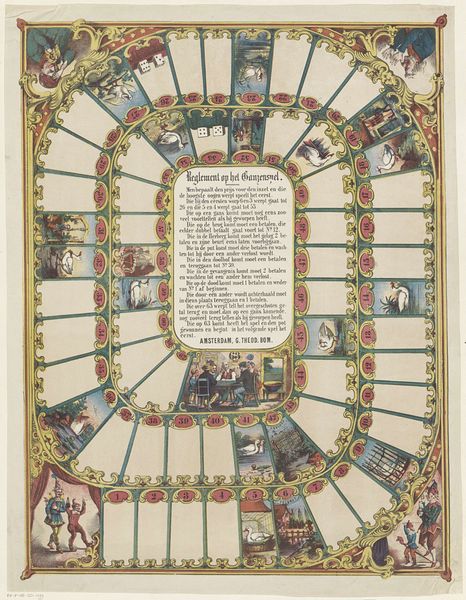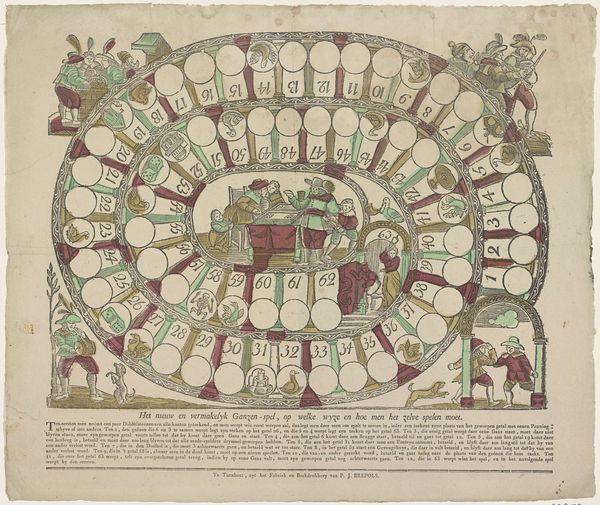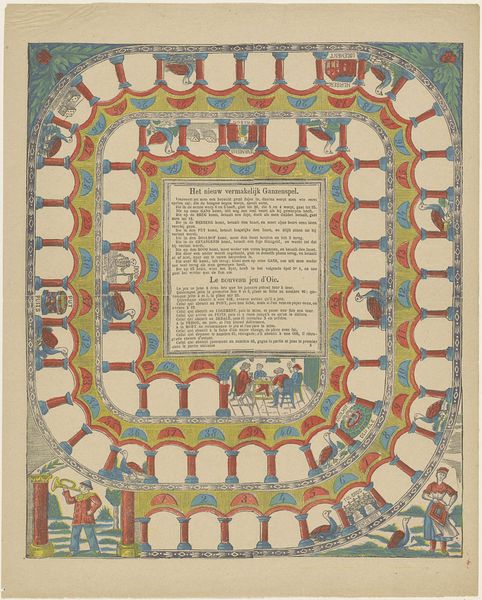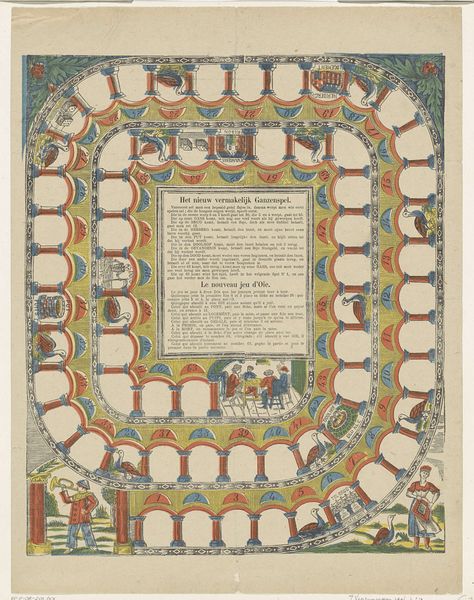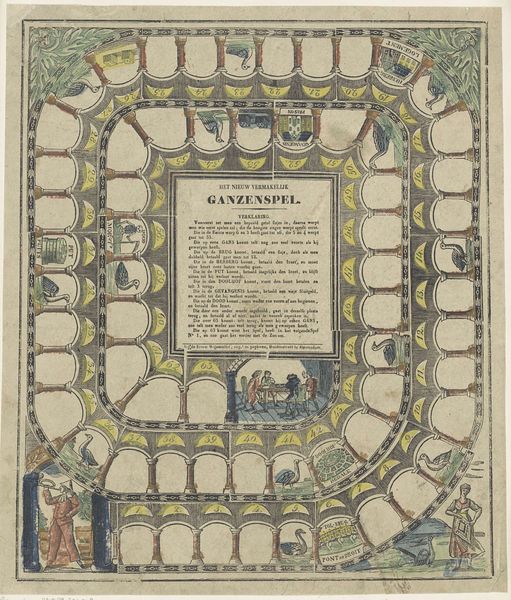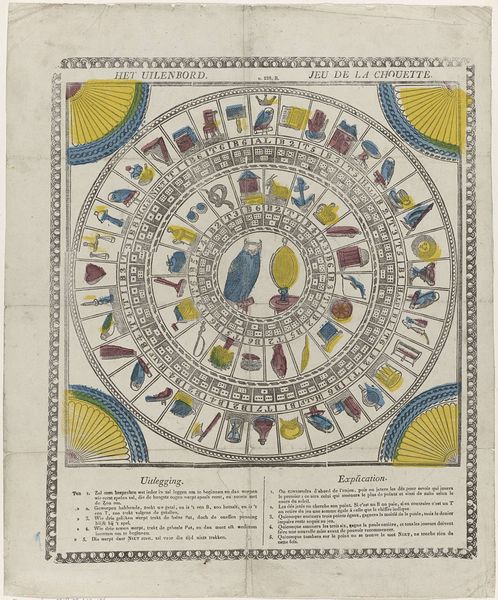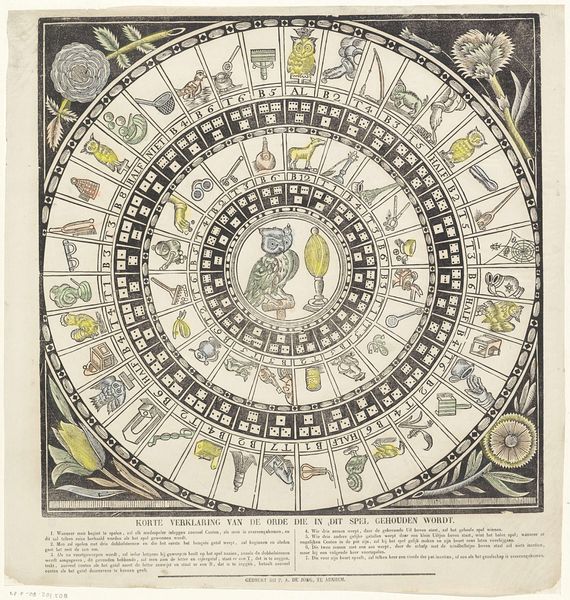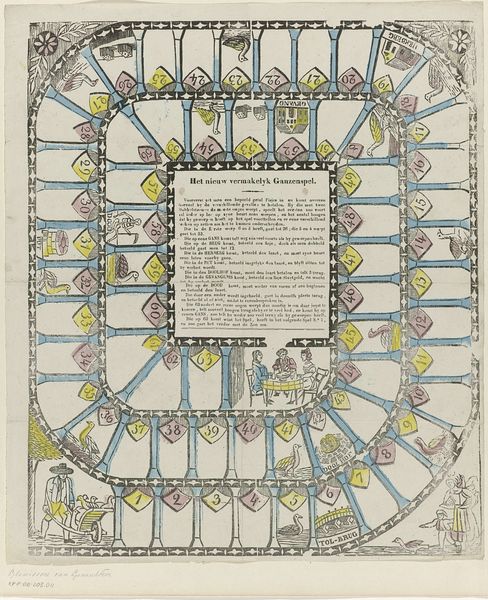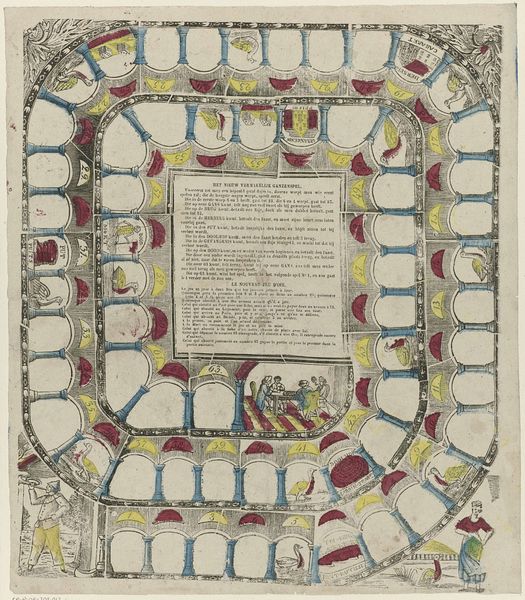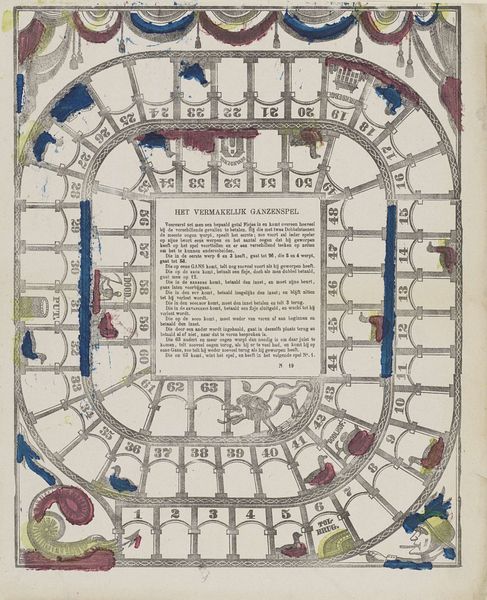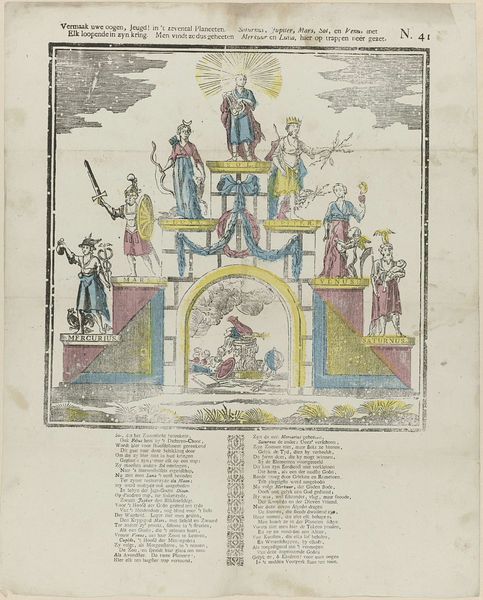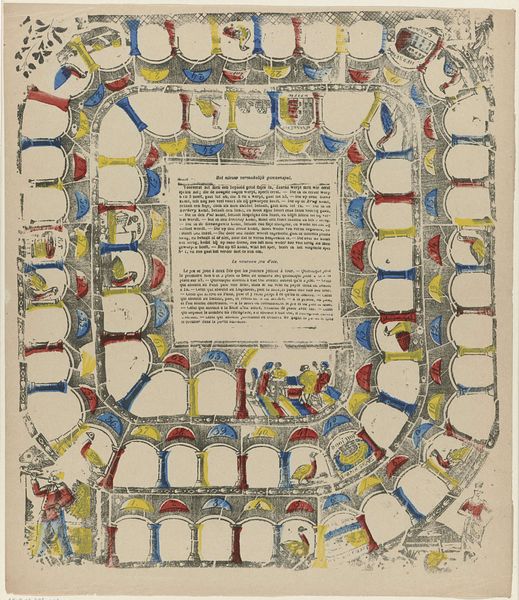
print, engraving
#
portrait
#
neoclacissism
# print
#
intricate pattern
#
pen work
#
pattern repetition
#
genre-painting
#
history-painting
#
layered pattern
#
coloring book page
#
engraving
Dimensions: height 485 mm, width 322 mm
Copyright: Rijks Museum: Open Domain
Curator: This print, titled "Nieuw koninklijk spel" or "New Royal Game," dates from around 1820 and is held at the Rijksmuseum. The artist associated with it is Jan (Sr.) Oortman. It's an engraving. What strikes you first? Editor: It immediately recalls something between a board game and an allegorical map. The repeating motifs, the sequential numbering… there's a playful element here, but one underpinned by what feels like very serious symbolism. It has a neoclassical rigidity. Curator: Neoclassicism is evident. But consider the production of this piece. It's an engraving, meaning the design was meticulously carved into a plate, likely copper, inked, and then pressed onto paper. Think of the labor involved in achieving this level of detail. Also, notice the added color: most likely applied by hand, turning this from a mass-produced object into a handcrafted one. The shift from industry to craft within the same artwork is something that I find fascinating. Editor: Absolutely, but let's look closer at what these symbols signify. At the center, we see a figure on horseback, a clear symbol of power and perhaps military might. And around this central figure are various portraits and other iconographic images forming this spiral towards the number 60. Curator: The 'game' aspect offers a lens into the consumer market of the time, too. Prints like this circulated widely, blurring lines between art object and commodity, each playing a part in how this imagery and the symbols contained became relevant or faded away, depending on public appetite and changing fashions. How this impacts access is also important to explore. Editor: This does seem quite different than earlier forms of more exclusive and commissioned portraiture. And even more interesting if the "game" aspect suggests that there is a bit of "chance" baked in—some might rise and some might fall depending on fate as much as individual effort. It speaks volumes about the values, anxieties, and even entertainment of the people playing it in the Netherlands at this moment in time. Curator: A unique perspective, seeing the material conditions shaping not just the creation, but its dissemination. Considering the paper itself— where did the raw materials originate? Who was involved in its manufacture and the sale of such an object to the consumer? Editor: And, conversely, analyzing that distribution reveals how deeply embedded those symbols and stories became within that society. We can begin to uncover the ideas and shared understandings that made them so meaningful. It’s such an intriguing piece to unravel. Curator: Indeed, a deceptively simple print reveals a web of complex questions, material processes, and cultural significations. Editor: Yes, something truly to ponder about our relationship to images.
Comments
No comments
Be the first to comment and join the conversation on the ultimate creative platform.

